
Francis Xavier, SJ, venerated as Saint Francis Xavier, was a Spanish Catholic missionary and saint who co-founded the Society of Jesus and, as a representative of the Portuguese Empire, led the first Christian mission to Japan.

The Society of Jesus, also known as the Jesuit Order or the Jesuits, is a religious order of clerics regular of pontifical right for men in the Catholic Church headquartered in Rome. It was founded in 1540 by Ignatius of Loyola and six companions, with the approval of Pope Paul III. The society is engaged in evangelization and apostolic ministry in 112 nations. Jesuits work in education, research, and cultural pursuits. Jesuits also conduct retreats, minister in hospitals and parishes, sponsor direct social and humanitarian ministries, and promote ecumenical dialogue.

The Church of St. Ignatius of Loyola at Campus Martius is a Latin Catholic titular church, of deaconry rank, dedicated to Ignatius of Loyola, the founder of the Society of Jesus, located in Rome, Italy. Built in Baroque style between 1626 and 1650, the church functioned originally as the chapel of the adjacent Roman College, which moved in 1584 to a new larger building and was renamed the Pontifical Gregorian University.

The suppression of the Society of Jesus was the removal of all members of the Jesuits from most of Western Europe and their respective colonies beginning in 1759 along with the abolition of the order by the Holy See in 1773; the papacy acceded to said anti-Jesuit demands without much resistance. The Jesuits were serially expelled from the Portuguese Empire (1759), France (1764), the Two Sicilies, Malta, Parma, the Spanish Empire (1767) and Austria, and Hungary (1782).

The Church of the Gesù is the mother church of the Society of Jesus (Jesuits), a Catholic religious order. Officially named Chiesa del Santissimo Nome di Gesù, its façade is "the first truly baroque façade", introducing the baroque style into architecture. The church served as a model for innumerable Jesuit churches all over the world, especially in the central Europe and then in the Portuguese colonies. Its paintings in the nave, crossing, and side chapels became models for Jesuit churches throughout Italy and Europe, as well as those of other orders. The Church of the Gesù is located in the Piazza del Gesù in Rome.

Giovanni Battista Gaulli, also known as Baciccio or Baciccia, was an Italian artist working in the High Baroque and early Rococo periods. He is best known for his grand illusionistic vault frescos in the Church of the Gesù in Rome, Italy. His work was influenced by Gian Lorenzo Bernini.

Consecrated life is a state of life in the Catholic Church lived by those faithful who are called to follow Jesus Christ in a more exacting way. It includes those in institutes of consecrated life, societies of apostolic life, as well as those living as hermits or consecrated virgins/widows.
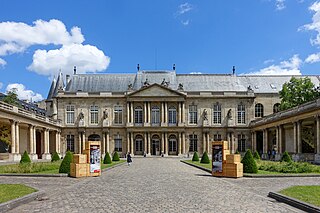
The Hôtel de Soubise is a city mansion entre cour et jardin, located at 60 rue des Francs-Bourgeois, in the 3rd arrondissement of Paris.
Charles Neale (1751–1823) was a leader of the Jesuit mission in America. Neale came from a prominent Catholic family of Maryland.
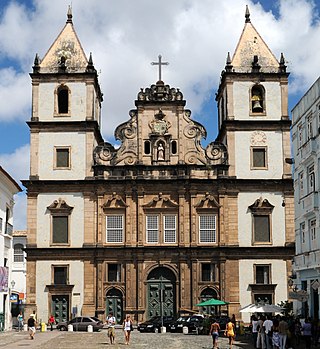
The São Francisco Church and Convent of Salvador is located in the historical centre of Salvador, in the State of Bahia, Brazil. The ornate Church of the Third Order of Saint Francis sits adjacent to the convent. The friars of the Franciscan Order arrived in Salvador in 1587 and constructed a convent and church on the site. This structure was destroyed by the Dutch during the Dutch invasions of Bahia in the next century; Father Vicente das Chagas initiated the current structure in 1686, which was completed in the 18th century. The Franciscan church and convent have the largest number of azulejos, 55,000, of any church in Latin America.
Pierre Biard was a Jesuit missionary who was given orders by Father Pierre Coton, Jesuit provincial in Paris, to take charge of a mission at Port-Royal in Acadia, along with Father Énemond Massé.

Jesuit conspiracy theories are conspiracy theories about the members of the Society of Jesus (Jesuits), a religious order in the Catholic Church. Such theories began appearing as early as 1550, just ten years after the founding of the Jesuits, who were often accused by their enemies due to the intellectual and political influence which members of the Society of Jesus exerted.

Luis Francisco Ladaria Ferrer is a Spanish Jesuit, theologian and a cardinal of the Catholic Church. After a thirty-year career teaching theology, he joined the Roman Curia in 2004 as Secretary-General of the International Theological Commission. He was made an archbishop when named secretary of the Dicastery for the Doctrine of the Faith (CDF) in 2008 and served as its prefect from 2017 to 2023. He was raised to the rank of cardinal in 2018.
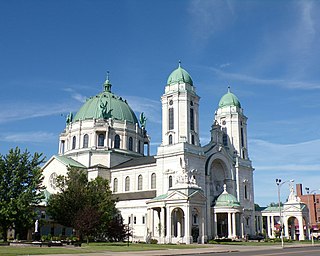
The Our Lady of Victory Basilica is a Catholic parish church and national shrine in Lackawanna, New York. Due to the multiple charities of founder Father Nelson Baker, the shrine is a popular pilgrimage and visitor destination in Lackawanna. It is part of the Diocese of Buffalo.

Jesuit missions in North America were attempted in the late 16th century, established early in the 17th century, faltered at the beginning of the 18th, disappeared during the suppression of the Society of Jesus around 1763, and returned around 1830 after the restoration of the Society. The missions were established as part of the colonial drive of France and Spain during the period, the "saving of souls" being an accompaniment of the constitution of Nouvelle-France and early New Spain. The efforts of the Jesuits in North America were paralleled by their China missions on the other side of the world, and in South America. They left written documentation of their efforts, in the form of The Jesuit Relations.
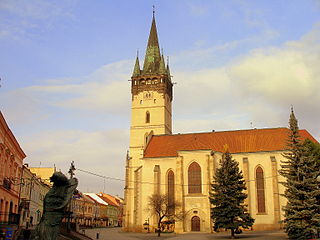
In 16th-century Christianity, Protestantism came to the forefront and marked a significant change in the Christian world.
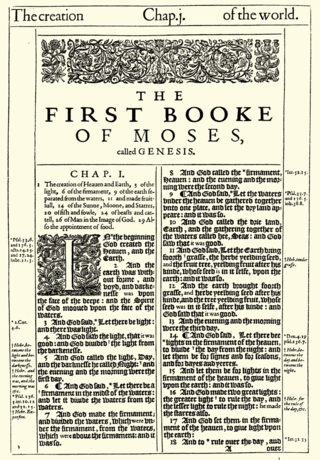
17th-century missionary activity in Asia and the Americas grew strongly, put down roots, and developed its institutions, though it met with strong resistance in Japan in particular. At the same time Christian colonization of some areas outside Europe succeeded, driven by economic as well as religious reasons. Christian traders were heavily involved in the Atlantic slave trade, which had the effect of transporting Africans into Christian communities. A land war between Christianity and Islam continued, in the form of the campaigns of the Habsburg Empire and Ottoman Empire in the Balkans, a turning point coming at Vienna in 1683. The Tsardom of Russia, where Orthodox Christianity was the established religion, expanded eastwards into Siberia and Central Asia, regions of Islamic and shamanistic beliefs, and also southwest into Ukraine, where the Uniate Eastern Catholic Churches arose.
Thomas Darbyshire (1518–1604) was an English churchman and Jesuit.

Ad maiorem Dei gloriam or Ad majórem Dei glóriam, also rendered as the abbreviation AMDG, is the Latin motto of the Society of Jesus (Jesuits), an order of the Catholic Church. It means "For the greater glory of God."

The church of Santa Maria Assunta, known as I Gesuiti, is a religious building in Venice, Italy. It is located in the sestiere of Cannaregio, in Campo dei Gesuiti, not far from the Fondamenta Nuove.
















